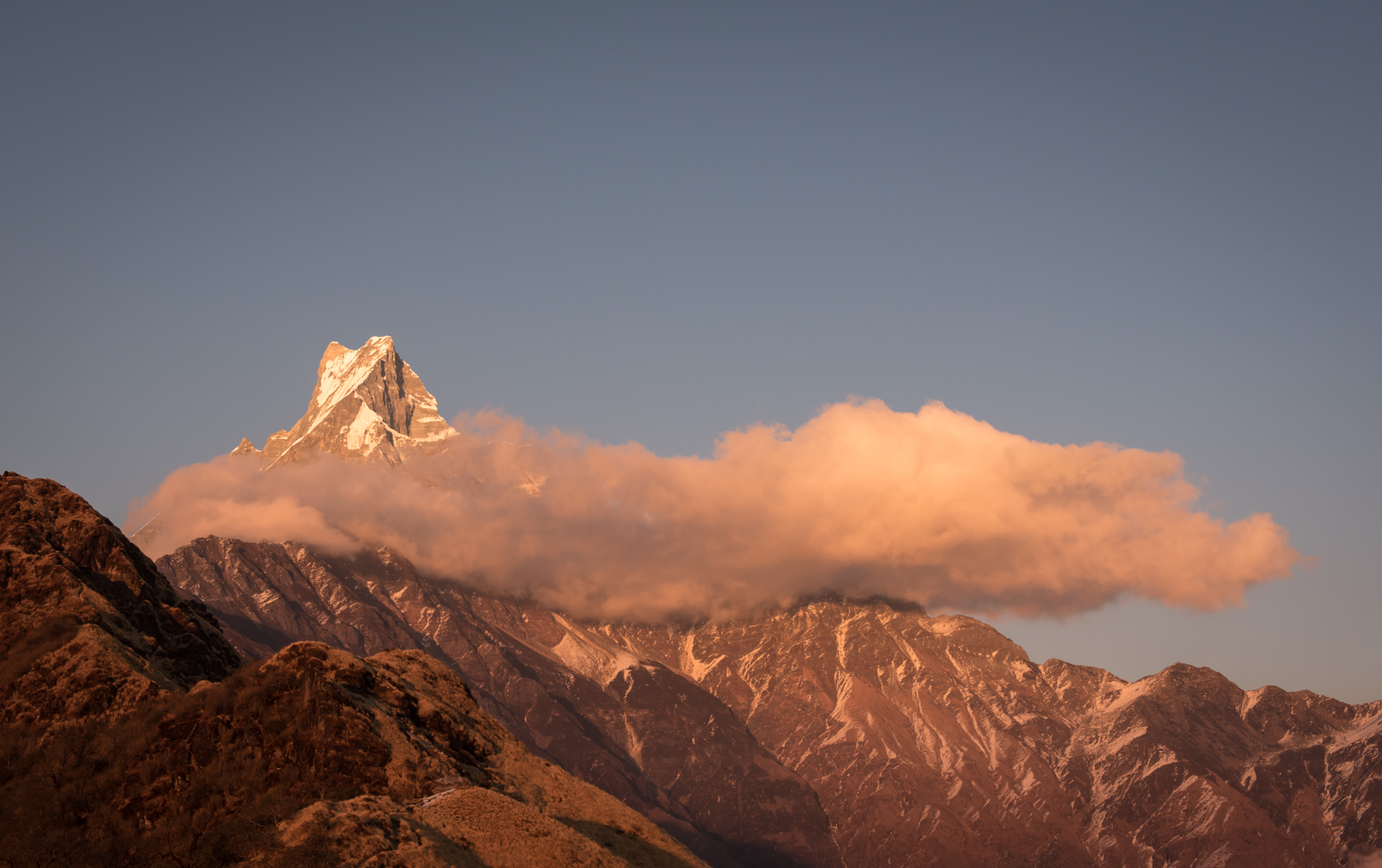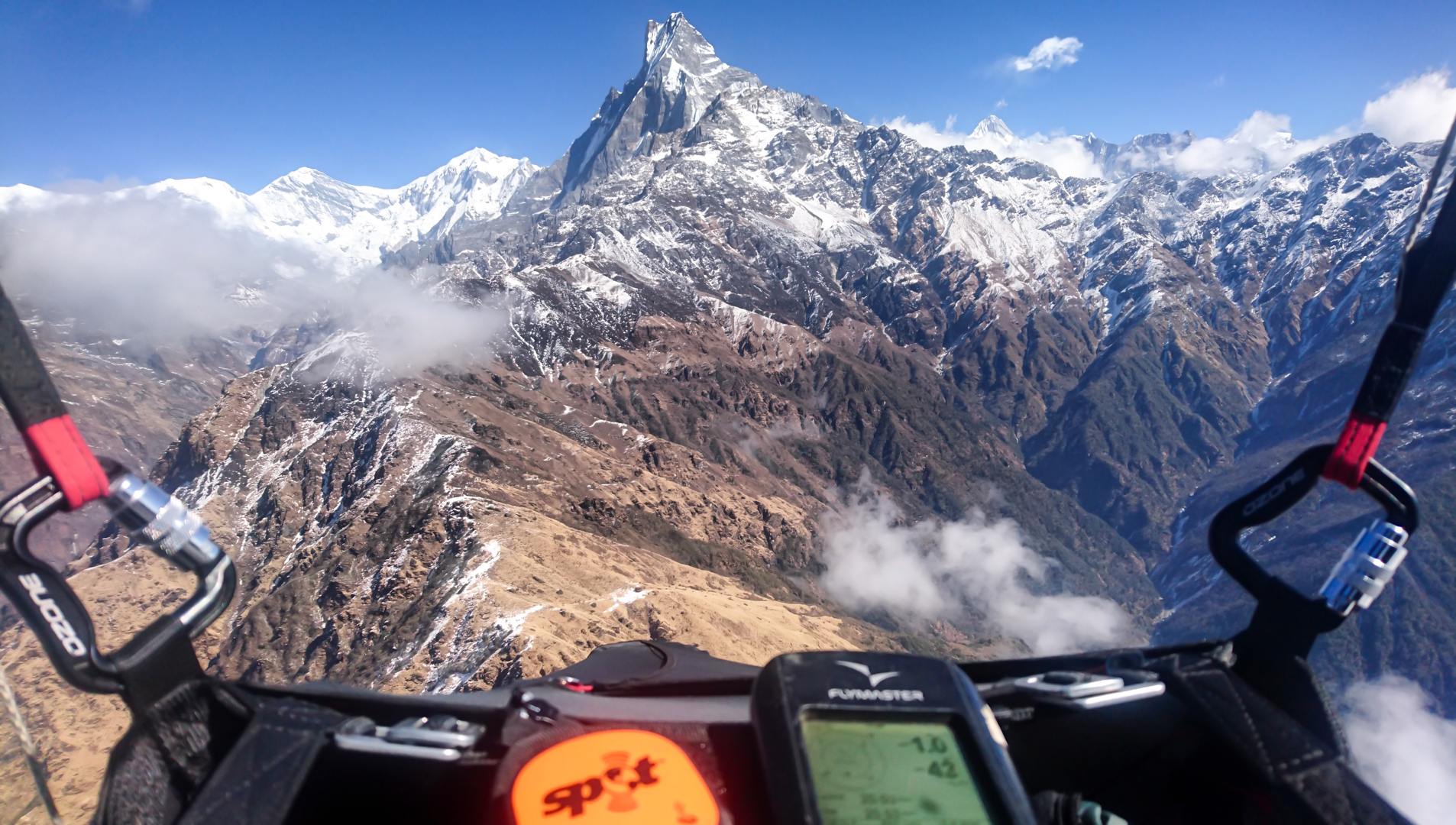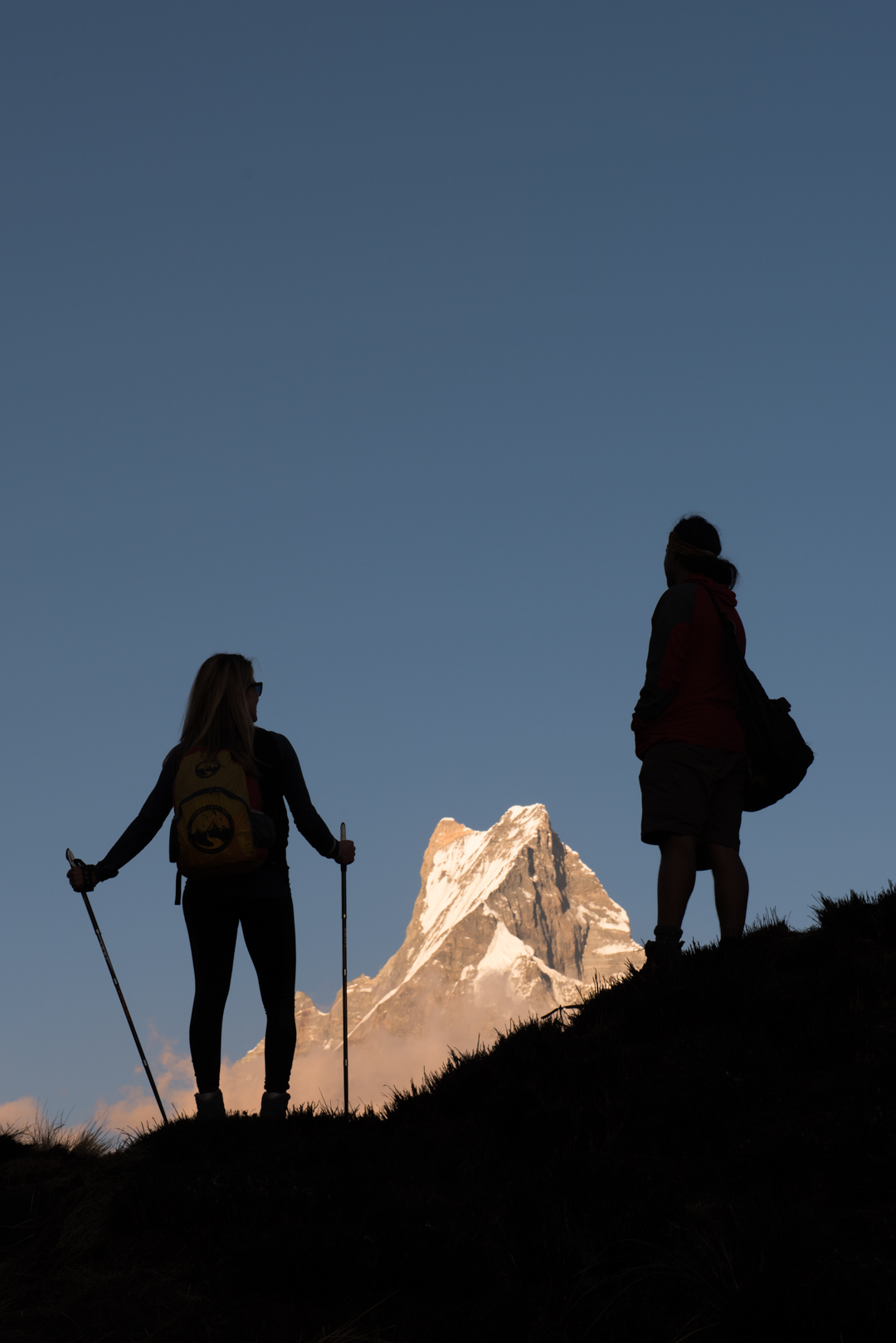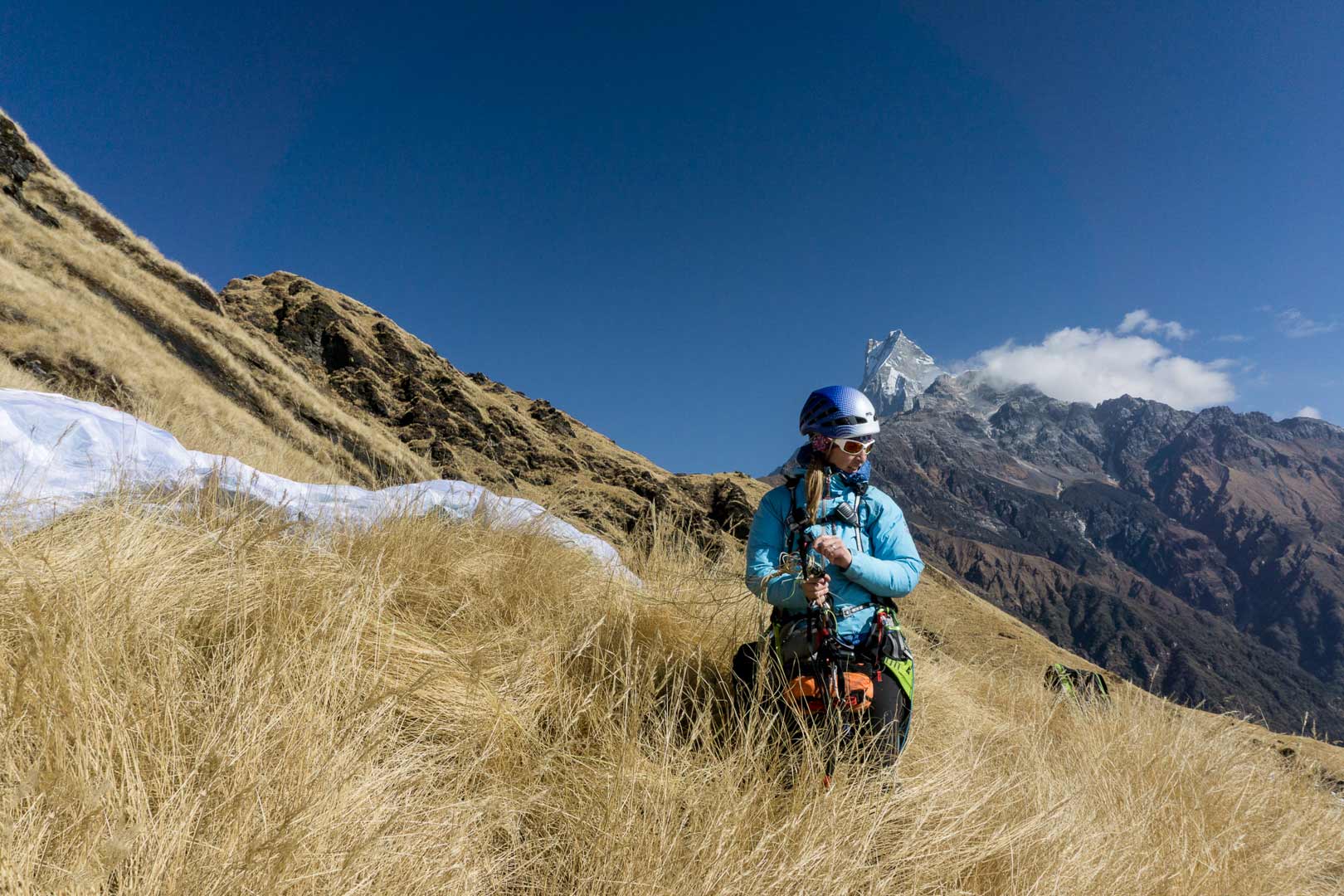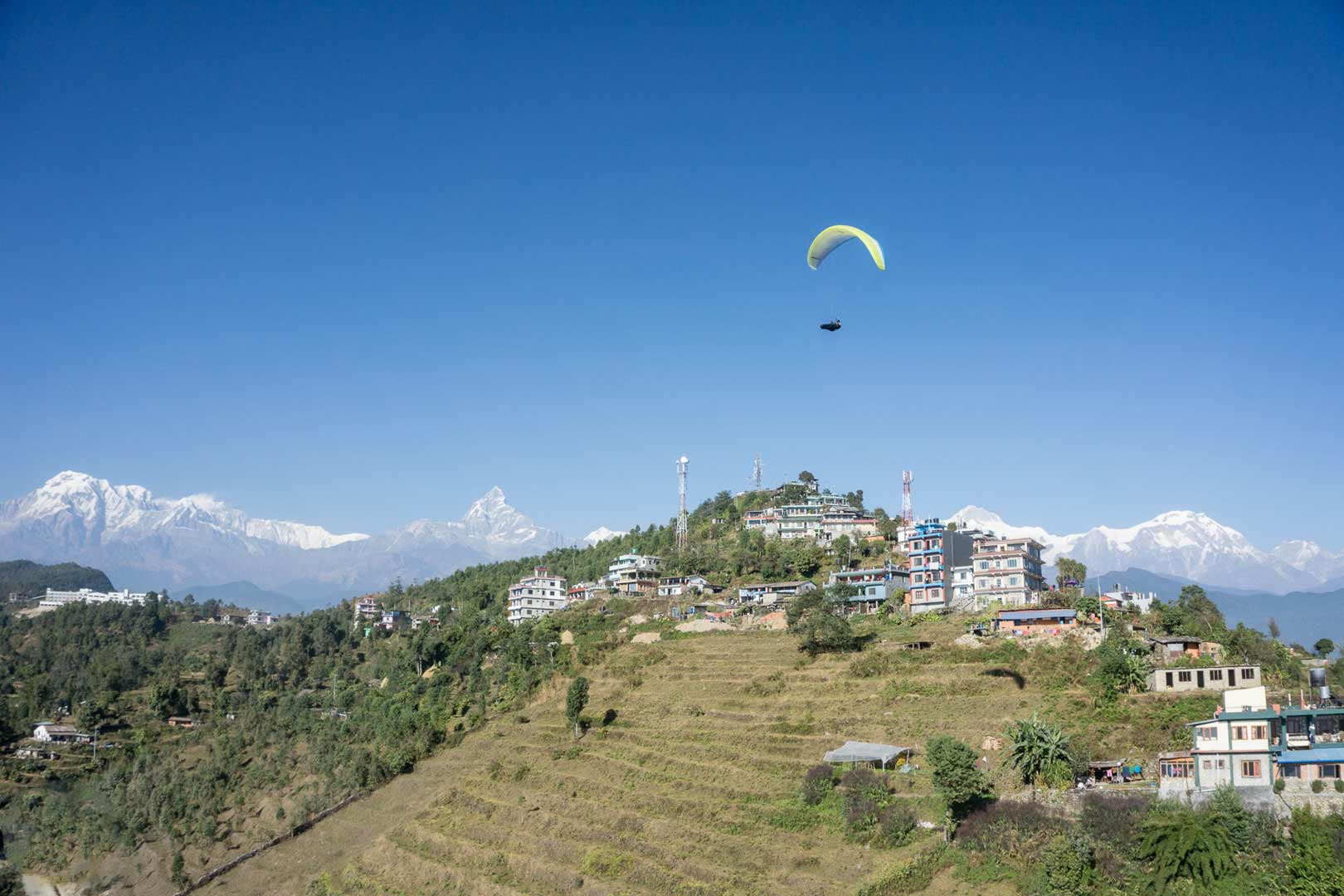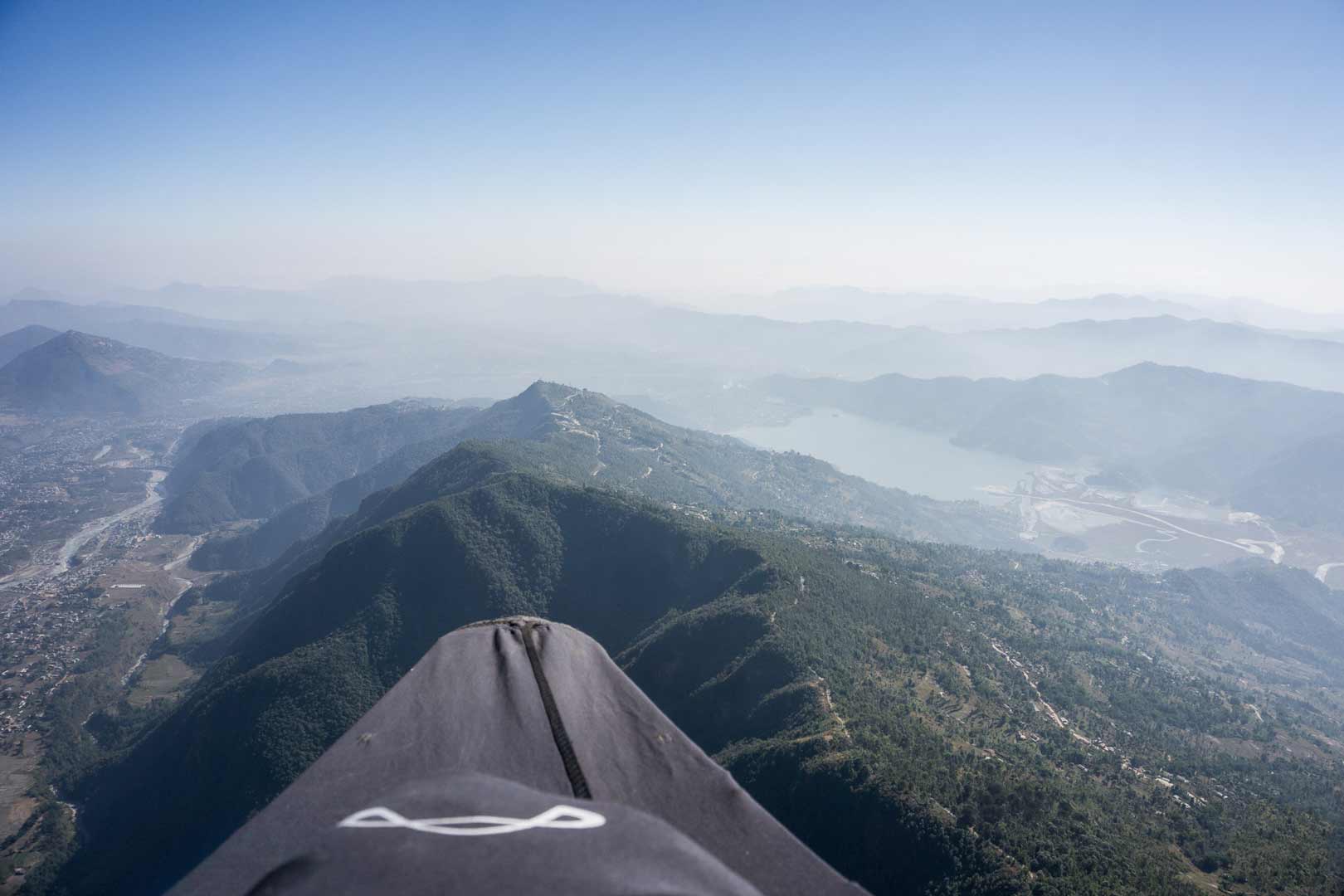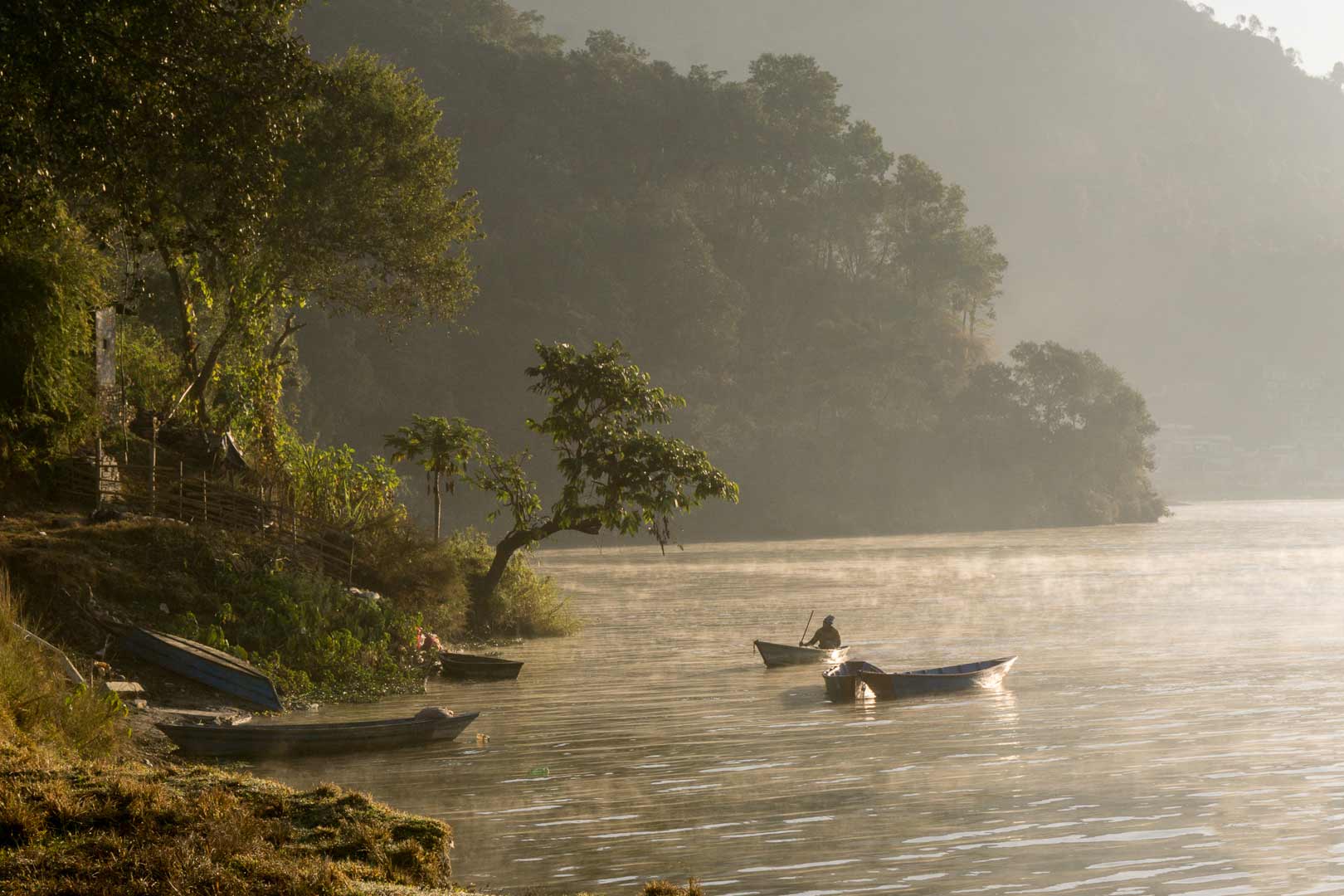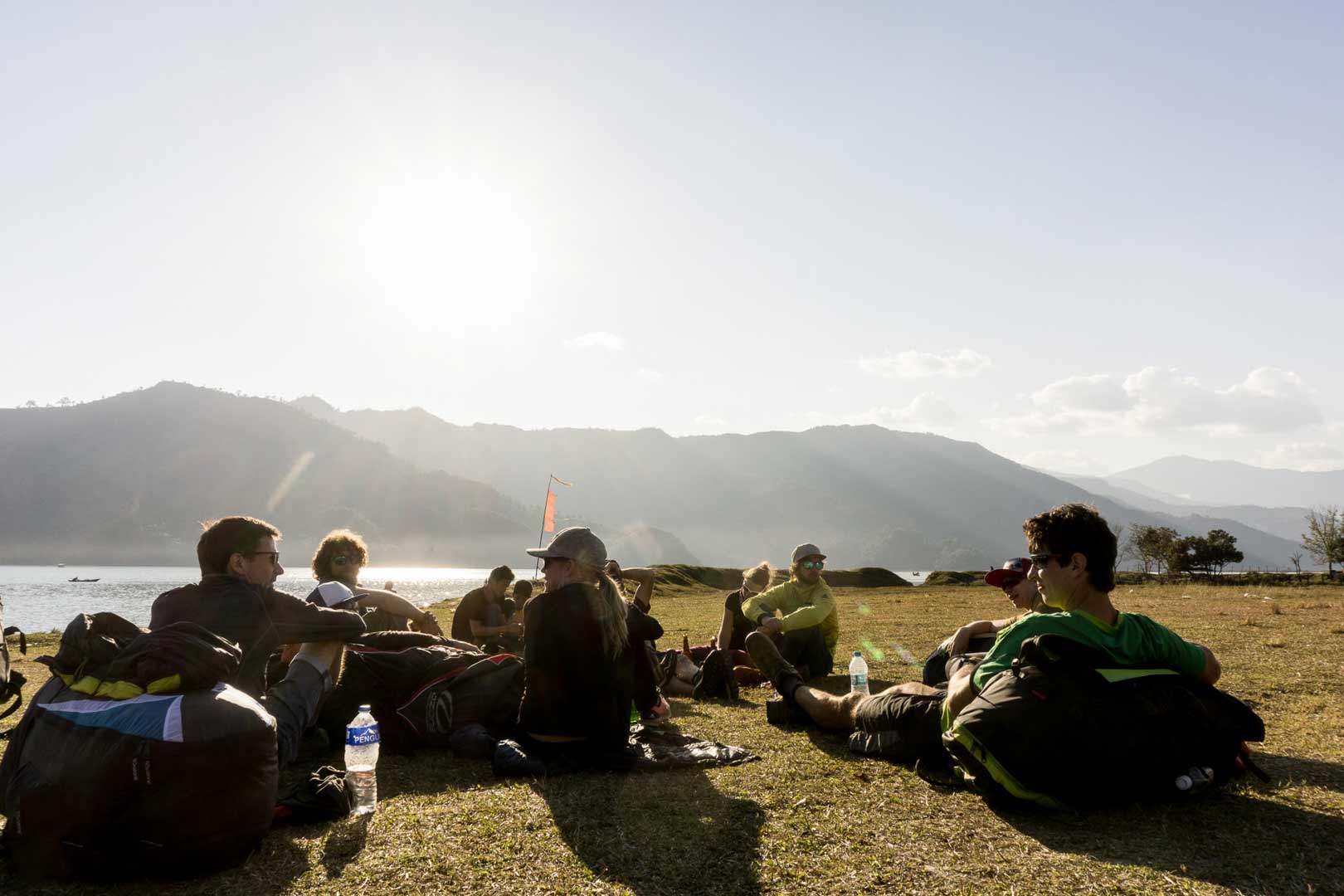Words by Mark Brightwell | Main photograph by Ivan Ripoll
I am standing on the lakeshore of Phewa Tal in Nepal’s calm tourist town of Lakeside Pokhara. From here the terrain jacks up steeply, reaching its zenith at Sarankot’s summit, a vertical gain of 800m, from which hundreds of paragliders launch into the thermals. Most of them are commercial tandem flights, and this will be as far as their paragliding experience goes, but for the more adventurous, it is just the beginning.
Though a paragliding rookie myself, I am here with pilots whose skill and experience is derived from decades of flying on the World Cup circuit as well as in the great ranges of Asia, Europe and even Alaska. For this group it is Sarankot’s Annapurna backdrop, the 7,000-8,000m peaks, which capture their imagination. Among them, Machapuchare, so named for its fishtailed twin peaks. It’s the jewel in the Annapurna crown and it is towards this peak that we venture. The aim is to launch from 3,500m and fly right back to Pokhara, a rare accomplishment, even among experienced pilots.
“The aim is to launch from 3,500m and fly right back to Pokhara, a rare accomplishment, even among experienced pilots.”
While the most carbon-free approach would be on foot from Pokhara, a beautiful marathon distance route with a vertical height gain of 3,500m, on this occasion we opt-easy and take a 4×4. In no time we are beyond the fringes of Pokhara’s urban sprawl and bumping up a rough track. We follow the valley, passing bare paddy fields, temples and small villages. Above us, from one of the jungled walls a thin veil of water draws a vertical white line, hundreds of feet in length, to the valley floor.
